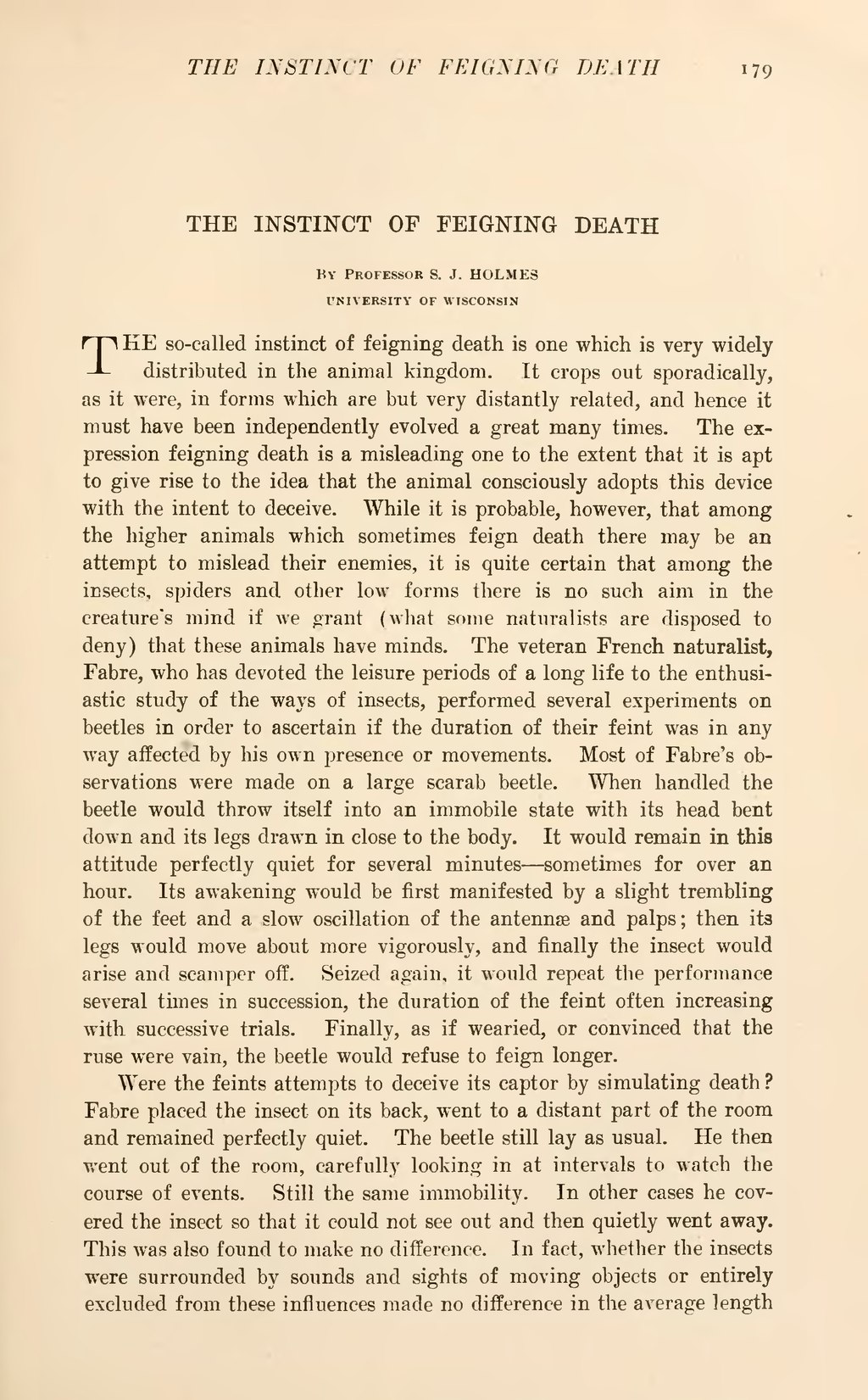| THE INSTINCT OF FEIGNING DEATH |
By Professor S. J. HOLMES
UNIVERSITY OF WISCONSIN
THE so-called instinct of feigning death is one which is very widely distributed in the animal kingdom. It crops out sporadically, as it were, in forms which are but very distantly related, and hence it must have been independently evolved a great many times. The expression feigning death is a misleading one to the extent that it is apt to give rise to the idea that the animal consciously adopts this device with the intent to deceive. While it is probable, however, that among the higher animals which sometimes feign death there may be an attempt to mislead their enemies, it is quite certain that among the insects, spiders and other low forms there is no such aim in the creature's mind if we grant (what some naturalists are disposed to deny) that these animals have minds. The veteran French naturalist, Fabre, who has devoted the leisure periods of a long life to the enthusiastic study of the ways of insects, performed several experiments on beetles in order to ascertain if the duration of their feint was in any way affected by his own presence or movements. Most of Fabre's observations were made on a large scarab beetle. When handled the beetle would throw itself into an immobile state with its head bent down and its legs drawn in close to the body. It would remain in this attitude perfectly quiet for several minutes—sometimes for over an hour. Its awakening would be first manifested by a slight trembling of the feet and a slow oscillation of the antennæ and palps; then its legs would move about more vigorously, and finally the insect would arise and scamper off. Seized again, it would repeat the performance several times in succession, the duration of the feint often increasing with successive trials. Finally, as if wearied, or convinced that the ruse were vain, the beetle would refuse to feign longer.
Were the feints attempts to deceive its captor by simulating death? Fabre placed the insect on its back, went to a distant part of the room and remained perfectly quiet. The beetle still lay as usual. He then went out of the room, carefully looking in at intervals to watch the course of events. Still the same immobility. In other cases he covered the insect so that it could not see out and then quietly went away. This was also found to make no difference. In fact, whether the insects were surrounded by sounds and sights of moving objects or entirely excluded from these influences made no difference in the average length
